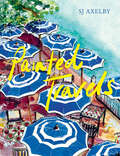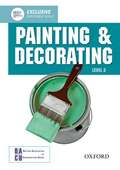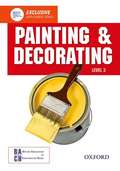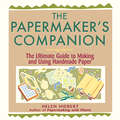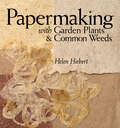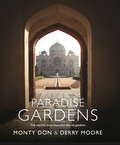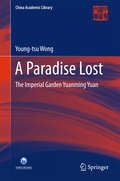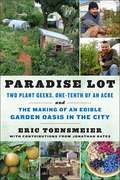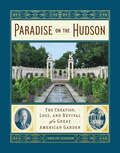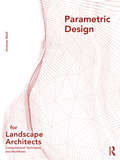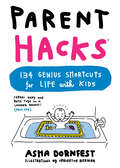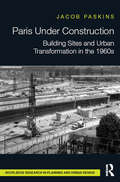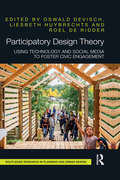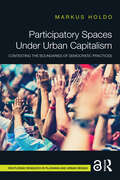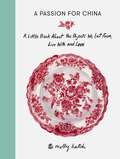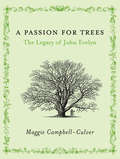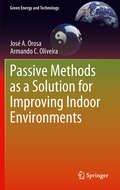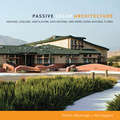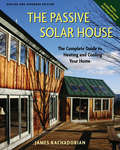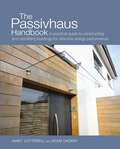- Table View
- List View
Painted Travels: Portraits Of Remarkable Places
by SJ AxelbyAn armchair discovery tour of truly remarkable places, captured in SJ Axelby’s inimitable watercolours. This follow-up volume to SJ Axelby’s Interior Portraits transports the reader to bars, cafes, museums, shops, hotels, tearooms, restaurants, lobbies, vineyards, trains, casinos, members’ clubs and more, around the world.
Painting and Decorating Level 2 Diploma: Student Book (PDF)
by British Association of Construction HeadsWritten for the Cskills Awards Level 2 Diploma in Painting and Decorating, this book has been developed in partnership with the British Association of Construction Heads (BACH) to bring you up-to-date and expert knowledge of painting and decorating.
Painting and Decorating Level 3 Diploma Student Book
by British Association of Construction HeadsThis book has been developed in partnership with the British Association of Construction Heads (BACH) to bring you up-to-date and expert knowledge of painting and decorating. Written for the Cskills Awards Level 3 Diploma in Painting and Decorating, it is also suitable for the equivalent C&G specification.
Painting and Decorating Level 3 Diploma Student Book 1 (PDF)
by British Association of Construction HeadsThis text has been developed in partnership with the British Association of Construction Heads (BACH) to bring you up-to-date and expert knowledge of painting and decorating. Written for the Cskills Awards level 3 diploma in painting and decorating, it is also suitable for the equivalent C & G specification.
The Papermaker's Companion: The Ultimate Guide to Making and Using Handmade Paper
by Helen HiebertCraft your own colorful paper goods and personalized stationary. With clear, step-by-step instructions, Helen Heibert covers all aspects of the papermaking process — from growing and harvesting plants for a malleable paper pulp to embellishment techniques like dyeing, embossing, and laminating. With tips on building your own papermaking equipment, ideas for transforming junk mail into dazzlingly unique notecards, and much more, you&’ll be inspired to let your creativity shine as you explore the endless possibilities of handcrafted papers.
Papermaking with Garden Plants & Common Weeds
by Helen HiebertMake exquisite papers right in your own kitchen. With a few pieces of basic equipment and a small harvest of backyard weeds, you can easily create stunningly original handcrafted papers. Helen Heibert&’s illustrated step-by-step instructions show you how easy it is to blend and shape a variety of organic fibers into professional stationery, specialty books, and personalized gifts. You&’ll soon be creatively integrating plant stalks, bark, flower petals, pine needles, and more to add unique colors and textures to your paper creations. This publication conforms to the EPUB Accessibility specification at WCAG 2.0 Level AA.
Paradise Gardens: the world's most beautiful Islamic gardens
by Monty Don Derry Moore'Lavish ... a celebration of the history and enduring romance of Islamic gardens' Washington PostAs seen on the highly acclaimed BBC2 series Monty Don's Paradise Gardens, a full colour exploration of the astonishing beauty of twenty-nine Islamic paradise gardens from Iran, Turkey, India, England, Spain and Morocco. In the Islamic tradition, a garden with its central elements of water, the scent of fruit trees, and places for rest and reflection, celebrate heaven on earth. Paradise gardens play a central role in everyday life in the Islamic world, yet little is known about them. Monty Don and acclaimed photographer, Derry Moore, set off on a journey to find out more about the principles and immersive delights of paradise gardens and how a very different culture and climate has influenced garden design round the world. Their journey covers twenty-nine gardens from the Real Alcazar and the Alhambra in Spain, and Le Jardin Majorelle in Morocco, to Highgrove and a Mughal garden in Bradford in England. There are some spectacular and rarely seen examples such as Pasargadae and the Maidan in Isfahan, Iran, the birthplace of paradise gardens, as well as the more renowned examples such as Turkey's Topkapi Palace and the Amber Palace and Taj Mahal in India.A glorious celebration of the richness of Islamic culture through some of the most beautiful gardens on earth.'A garden, green and filled with water is heaven on earth - it is paradise.' Monty Don
A Paradise Lost: The Imperial Garden Yuanming Yuan (China Academic Library)
by Young-tsu WongThis book is aimed at readers and researchers who are interested in Chinese garden architecture, the rise and fall of Yuanming Yuan and the history of the Qing dynasty. It is the first comprehensive study of the palatial garden complex in a Western language, and is amply illustrated with photographs and original drawings. Young-tsu Wong’s engaging writing style brings "the garden of perfect brightness" to life as he leads readers on a grand tour of its architecture and history.
Paradise Lot: Two Plant Geeks, One-Tenth of an Acre, and the Making of an Edible Garden Oasis in the City
by Eric Toensmeier Jonathan BatesWhen Eric Toensmeier and Jonathan Bates moved into a duplex in a run-down part of Holyoke, Massachusetts, the tenth-of-an-acre lot was barren ground and bad soil, peppered with broken pieces of concrete, asphalt, and brick. The two friends got to work designing what would become not just another urban farm, but a "permaculture paradise" replete with perennial broccoli, paw paws, bananas, and moringa—all told, more than two hundred low-maintenance edible plants in an innovative food forest on a small city lot. The garden—intended to function like a natural ecosystem with the plants themselves providing most of the garden's needs for fertility, pest control, and weed suppression—also features an edible water garden, a year-round unheated greenhouse, tropical crops, urban poultry, and even silkworms. In telling the story of Paradise Lot, Toensmeier explains the principles and practices of permaculture, the choice of exotic and unusual food plants, the techniques of design and cultivation, and, of course, the adventures, mistakes, and do-overs in the process. Packed full of detailed, useful information about designing a highly productive permaculture garden, Paradise Lot is also a funny and charming story of two single guys, both plant nerds, with a wild plan: to realize the garden of their dreams and meet women to share it with. Amazingly, on both counts, they succeed.
Paradise on the Hudson: The Creation, Loss, and Revival of a Great American Garden
by Caroline SeebohmThis lushly illustrated book tells the amazing story of the rise, fall, and rebirth the Untermyer Garden, one of the most extravagant and celebrated 20th Century gardens.
Parametric Design for Landscape Architects: Computational Techniques and Workflows
by Andrew MadlParametric Design for Landscape Architects provides a sequence of tutorial-based workflows for the creation and utilization of algorithmic tools calibrated toward the field of landscape architecture. Contemporary practice and projective theory in landscape architecture require the processing and design of data associated with complex systems to adequately represent composite, emergent scenarios. Aligning to both traditional and nascent processes of analysis and digital modeling, this book unpacks and decodes the characterization of algorithmic-based automation, leveraging software that is widely accessible in both academia and professional practice. Curated throughout are workflows that apply to a multiplex of computation programs that widely support the design, analysis, and production of landscapes, primarily concentrated on digital modeling tools Grasshopper and Rhinoceros. It is a much-needed, visually accessible resource to aid in more efficient understanding and creation of tools that automate and re-examine traditional calculations, analyses, drawing standards, form-finding strategies, fabrication preparations, and speculative assessments/simulation. This primer provides professionals and students with multifaceted skill-sets that, when applied in practice, expand and expedite conventional and speculative design workflows applicable to spatial design, and more specifically landscape architecture. The book includes over 200 full-colour drawings, images, and tables to illustrate and support examples throughout.
Parametric Design for Landscape Architects: Computational Techniques and Workflows
by Andrew MadlParametric Design for Landscape Architects provides a sequence of tutorial-based workflows for the creation and utilization of algorithmic tools calibrated toward the field of landscape architecture. Contemporary practice and projective theory in landscape architecture require the processing and design of data associated with complex systems to adequately represent composite, emergent scenarios. Aligning to both traditional and nascent processes of analysis and digital modeling, this book unpacks and decodes the characterization of algorithmic-based automation, leveraging software that is widely accessible in both academia and professional practice. Curated throughout are workflows that apply to a multiplex of computation programs that widely support the design, analysis, and production of landscapes, primarily concentrated on digital modeling tools Grasshopper and Rhinoceros. It is a much-needed, visually accessible resource to aid in more efficient understanding and creation of tools that automate and re-examine traditional calculations, analyses, drawing standards, form-finding strategies, fabrication preparations, and speculative assessments/simulation. This primer provides professionals and students with multifaceted skill-sets that, when applied in practice, expand and expedite conventional and speculative design workflows applicable to spatial design, and more specifically landscape architecture. The book includes over 200 full-colour drawings, images, and tables to illustrate and support examples throughout.
Parent Hacks: 134 Genius Shortcuts for Life with Kids
by Asha DornfestLife with kids just got easier with these 134 ingenious hacks developed by parents just like you. Put the ketchup under the hot dog, minimizing the mess. Strap baby into a forward-facing carrier when you need to trim her fingernails—it frees your hands while controlling the squirming. Or stash a wallet in a disposable diaper at the beach—who would ever poke through what looks like a used Pamper? All these hacks are easy to do, are boldly illustrated, and use everyday items in unexpected ways. And the range—from pregnancy and postpartum, through sleep, eating, bath time, travel, and more—covers all the most critical years when parents really need a little extra help. &“Just . . . genius.&”—Buzzfeed
Paris Under Construction: Building Sites and Urban Transformation in the 1960s
by Jacob PaskinsDuring the 1960s, building sites in Paris became spaces that expressed preoccupations about urban transformation, labour immigration and national identity. As new buildings and infrastructure changed the city, building sites revealed the substandard living and working conditions of migrant construction workers in France. Moreover, construction was the touchstone in debates about the dangers of urban life, and triggered action in communities whose districts faced demolition. Paris Under Construction explores the social, political and cultural responses to construction work and urban transformation in the Paris metropolitan region during the 1960s. This examination of a decade of intensive building work considers the ways in which the experience of construction was mediated, produced and reproduced through a range of complex and sometimes contradictory representations. The building sites that produced the new Paris are no longer visible, and were perhaps never intended to be seen, yet different groups closely observed and recorded construction, giving it meanings that went beyond specific building activities. The research draws extensively on French newspaper, television and radio archives, and delves into rarely examined trade union material. Paris Under Construction gives voice to the witnesses of—and participants in—urban transformation who are usually excluded from architectural and urban history.
Paris Under Construction: Building Sites and Urban Transformation in the 1960s
by Jacob PaskinsDuring the 1960s, building sites in Paris became spaces that expressed preoccupations about urban transformation, labour immigration and national identity. As new buildings and infrastructure changed the city, building sites revealed the substandard living and working conditions of migrant construction workers in France. Moreover, construction was the touchstone in debates about the dangers of urban life, and triggered action in communities whose districts faced demolition. Paris Under Construction explores the social, political and cultural responses to construction work and urban transformation in the Paris metropolitan region during the 1960s. This examination of a decade of intensive building work considers the ways in which the experience of construction was mediated, produced and reproduced through a range of complex and sometimes contradictory representations. The building sites that produced the new Paris are no longer visible, and were perhaps never intended to be seen, yet different groups closely observed and recorded construction, giving it meanings that went beyond specific building activities. The research draws extensively on French newspaper, television and radio archives, and delves into rarely examined trade union material. Paris Under Construction gives voice to the witnesses of—and participants in—urban transformation who are usually excluded from architectural and urban history.
Participatory Design Theory: Using Technology and Social Media to Foster Civic Engagement
by Oswald Devisch Liesbeth Huybrechts Roel De RidderIn recent years, many countries all over Europe have witnessed a demand for a more direct form of democracy, ranging from improved clarity of information to being directly involved in decision-making procedures. Increasingly, governments are putting citizen participation at the centre of their policy objectives, striving for more transparency, to engage and empower local individuals and communities to collaborate on public projects and to encourage self-organization. This book explores the role of participatory design in keeping these participatory processes public. It addresses four specific lines of enquiry: how can the use and/or development of technologies and social media help to diversify, to coproduce, to interrupt and to document democratic design experiments? Aimed at researchers and academics in the fields of urban planning and participatory design, this book includes contributions from a range of experts across Europe including the UK, Belgium, the Netherlands, Italy, Denmark, Austria, Spain, France, Romania, Hungary and Finland.
Participatory Design Theory: Using Technology and Social Media to Foster Civic Engagement
by Oswald Devisch Liesbeth Huybrechts Roel De RidderIn recent years, many countries all over Europe have witnessed a demand for a more direct form of democracy, ranging from improved clarity of information to being directly involved in decision-making procedures. Increasingly, governments are putting citizen participation at the centre of their policy objectives, striving for more transparency, to engage and empower local individuals and communities to collaborate on public projects and to encourage self-organization. This book explores the role of participatory design in keeping these participatory processes public. It addresses four specific lines of enquiry: how can the use and/or development of technologies and social media help to diversify, to coproduce, to interrupt and to document democratic design experiments? Aimed at researchers and academics in the fields of urban planning and participatory design, this book includes contributions from a range of experts across Europe including the UK, Belgium, the Netherlands, Italy, Denmark, Austria, Spain, France, Romania, Hungary and Finland.
Participatory Spaces Under Urban Capitalism: Contesting the Boundaries of Democratic Practices (Routledge Research In Planning And Urban Design Ser.)
by Markus HoldoCan people use new participatory spaces to reclaim their rights as citizens and challenge structures of political power? This book carefully examines the constraints and possibilities for participatory governance under capitalism. To understand what is at stake in the politics of participation, we need to look beyond the values commonly associated with it. Citizens face a dilemma: should they participate, even if this helps to sustain an unjust system, or not participate, thereby turning down rare opportunities to make a difference? By examining the rationale behind democratic innovation and the reasons people have for getting involved, this book provides a theory of how citizens can use new democratic spaces to challenge political boundaries. Connecting numerous international case studies and presenting original research from Rosario, Argentina, this book offers a crucial corrective to previous research. What matters most is not the design of new models of participation nor is it the supposed radical imagination of political leaders. It is whether people use new spaces for participation to renegotiate what democracy means in practice. Bridging critical urban studies and democratic theory, this book will be of interest to researchers and students in the fields of democratic innovations, political economy and urban planning. It will also provide activists and practitioners of participatory democracy with important tools to expand spaces of grassroots democracy.
Participatory Spaces Under Urban Capitalism: Contesting the Boundaries of Democratic Practices (Routledge Research In Planning And Urban Design Ser.)
by Markus HoldoCan people use new participatory spaces to reclaim their rights as citizens and challenge structures of political power? This book carefully examines the constraints and possibilities for participatory governance under capitalism. To understand what is at stake in the politics of participation, we need to look beyond the values commonly associated with it. Citizens face a dilemma: should they participate, even if this helps to sustain an unjust system, or not participate, thereby turning down rare opportunities to make a difference? By examining the rationale behind democratic innovation and the reasons people have for getting involved, this book provides a theory of how citizens can use new democratic spaces to challenge political boundaries. Connecting numerous international case studies and presenting original research from Rosario, Argentina, this book offers a crucial corrective to previous research. What matters most is not the design of new models of participation nor is it the supposed radical imagination of political leaders. It is whether people use new spaces for participation to renegotiate what democracy means in practice. Bridging critical urban studies and democratic theory, this book will be of interest to researchers and students in the fields of democratic innovations, political economy and urban planning. It will also provide activists and practitioners of participatory democracy with important tools to expand spaces of grassroots democracy.
A Passion for China: A Little Book About the Objects We Eat from, Live with and Love
by Molly HatchA Passion for China is a personal celebration of the everyday beauty of tableware.'As we move through our daily lives, eating breakfast, sipping an afternoon cup of tea or gathering for a family dinner, the patterned ceramic objects we live with are precious witnesses to our stories. We eat from them, they warm our hands after a cold walk outdoors and we pull them out to celebrate the births, marriages and lives of our loved ones.'Acclaimed ceramicist, artist and designer Molly Hatch explores the family stories behind beloved items - the bowls and cups we have inherited or chosen with love and care - and brings the history of porcelain, potteries and patterns to life through her stunning, hand-drawn illustrations.A tribute to the rich heritage of the vintage plates, jugs and pots that make our homes our own.Please note this is a fixed-format ebook with colour images and may not be well-suited for older e-readers.
A Passion For Trees: The Legacy Of John Evelyn
by Maggie Campbell-CulverGiven the extent of his influence on 17th-century life, and his lasting impact on the British landscape it is remarkable that no book has been written before about John Evelyn. He was a longstanding friend of Samuel Pepys (who wrote of him, ' A most excellent person he is, and must be allowed a little for conceitedness; but he may well be so, being a man so much above others.'), a founder-member of the Royal Society and a prolific writer and diarist. He was an early advocate of the garden city but his most important work was Sylva: a Discourse of Forest Trees. Sylva was presented to the Royal Society to promote the planting of timber trees 'for the supply of the Navy, the employment and advantage of the poor as well as the ornamenting of the nation.' He was responsible for the first great raft of tree-planting and for a great influx of tree introductions to Britain.Maggie Campbell-Culver's book, like Sylva, has at its core a section detailing the characteristics, history and uses of 33 trees incorporating the advice Evelyn gave and demonstrating its relevance still in the 20th-century. Not only was Evelyn probably the first horticultural writer to show an appreciation of the aesthetic benefits of trees in our landscape, he is shown to be a founder-father of the modern conservation movement.
Passive Methods as a Solution for Improving Indoor Environments (Green Energy and Technology)
by José A. Orosa Armando C. OliveiraThere are many aspects to consider when evaluating or improving an indoor environment; thermal comfort, energy saving, preservation of materials, hygiene and health are all key aspects which can be improved by passive methods of environmental control. Passive Methods as a Solution for Improving Indoor Environments endeavours to fill the lack of analysis in this area by using over ten years of research to illustrate the effects of methods such as thermal inertia and permeable coverings; for example, the use of permeable coverings is a well known passive method, but its effects and ways to improve indoor environments have been rarely analyzed. Passive Methods as a Solution for Improving Indoor Environments includes both software simulations and laboratory and field studies. Through these, the main parameters that characterize the behavior of internal coverings are defined. Furthermore, a new procedure is explained in depth which can be used to identify the real expected effects of permeable coverings such as energy conservation and local thermal comfort as well as their working periods in controlling indoor environments. This theoretical base is built on by considering future research work including patents and construction indications which will improve indoor environmental conditions with evidence from real data. This makes Passive Methods as a Solution for Improving Indoor Environments an ideal resource for specialists and researchers focusing on indoor air quality, thermal comfort, and energy saving or with a general interest in controlling indoor environments with passive methods.
Passive Solar Architecture: Heating, Cooling, Ventilation, Daylighting and More Using Natural Flows (Energy Pocket Reference Ser.)
by David Bainbridge Ken HaggardNew buildings can be designed to be solar oriented, naturally heated and cooled, naturally lit and ventilated, and made with renewable, sustainable materials—no matter the location or climate. In this comprehensive overview of passive solar design, two of America’s solar pioneers give homeowners, architects, designers, and builders the keys to successfully harnessing the sun and maximizing climate resources for heating, cooling, ventilation, and daylighting. Bainbridge and Haggard draw upon examples from their own experiences, as well as those of others, of more than three decades to offer both overarching principles as well as the details and formulas needed to successfully design a more comfortable, healthy, and secure place in which to live, laugh, dance, and be comfortable. Even if the power goes off. Passive Solar Architecture also discusses “greener” and more-sustainable building materials and how to use them, and explores the historical roots of green design that have made possible buildings that produce more energy and other resources than they use.
The Passive Solar House: Using Solar Design to Cool and Heat Your Home, 2nd Edition
by James KachadorianRevised and Expanded Edition - Includes CD-ROM with Custom Design Software For the past ten years The Passive Solar House has offered proven techniques for building homes that heat and cool themselves, using readily available materials and methods familiar to all building contractors and many do-it-yourself homeowners. True to this innovative, straightforward approach, the new edition of this best-selling guide includes CSOL passive solar design software, making it easier than ever to heat your home with the power of the sun. Since The Passive Solar House was first published, passive solar construction expert James Kachadorian has perfected user-friendly, Windows-compatible software to supplement the design process explained in the book by allowing homeowners/designers to enter the specifications of their design and see how changing a variable will affect its energy efficiency. This is the building book for a world of climbing energy costs. Applicable to diverse regions, climates, budgets, and styles of architecture, Kachadorian's techniques translate the essentials of timeless solar design into practical wisdom for today's solar builders. Profiles of successful passive solar design, construction, and retrofit projects from readers of the first edition provide inspiration to first-time homebuilders and renovators alike.
The Passivhaus Handbook: A practical guide to constructing and retrofitting buildings for ultra-low energy performance (Sustainable Building #4)
by Janet Cotterell Adam Dadeby'As we move towards the 2016 zero carbon target in house building, Passivhaus construction looks like becoming not just popular in the UK, but commonplace. This is a no-nonsense and engaging introduction on how to do it.' KEVIN MCCLOUD-The Passivhaus Handbook is an essential guide for anyone wanting to realise a supremely comfortable, healthy and durable home with exceptionally low energy costs. Passivhaus design focuses on getting the building fabric right, to achieve ultra-low energy consumption cost-effectively. The approach is relevant to a wide range of building types and climates. Its methodology can be combined with elements of other building standards, such as the UK's Code for Sustainable Homes (CSH), or with other sustainable building goals, such as a commitment to using low-impact or natural building materials.Whether you are building an extension, retrofitting your house or starting from scratch, and whether you are new to low-energy design or already have some experience, this book will help you navigate around the potential pitfalls and misconceptions. It brings together current thinking and best practice.The book includes a clear explanation of the underlying building physics and terminology, as well as detailed information on key elements of Passivhaus: avoiding air leakage, designing thermal (cold) bridges, moisture management and ventilation strategy. There is also lots of practical advice on setting up a project, including developing a motivated project team, and a discussion of economic considerations and the policy context in the UK. As pressure on global resources increases and energy prices continue to rise, the Passivhaus approach, proven over 20 years, meets the challenge of ultra-low-energy building for the future.
